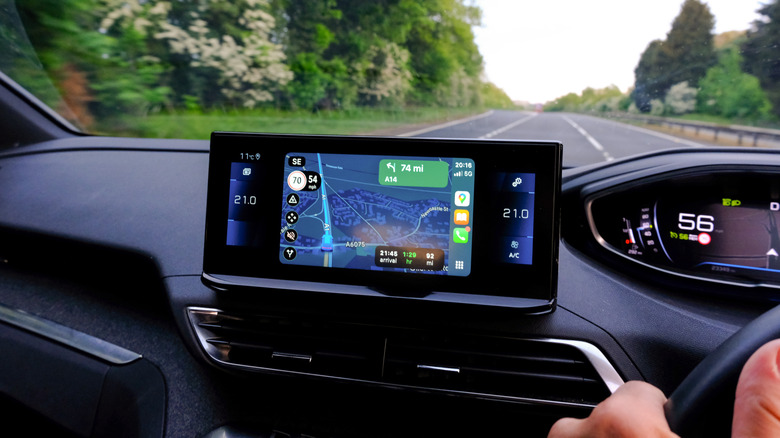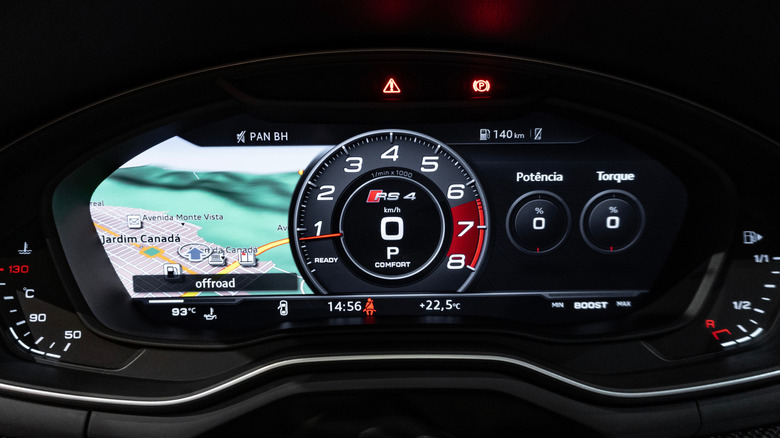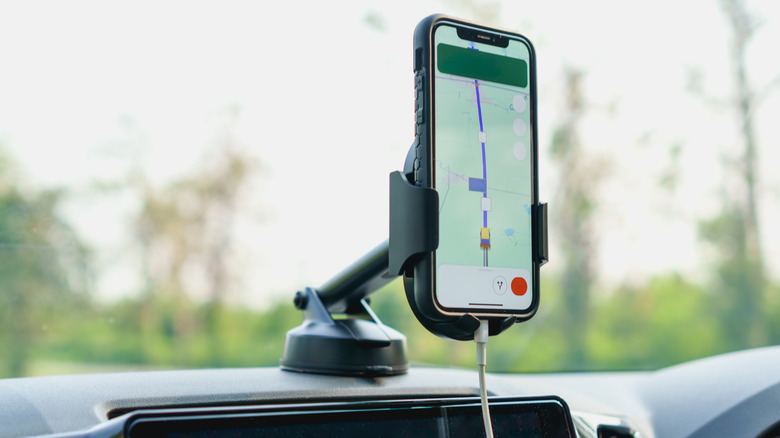How Accurate Is The Google Maps Speedometer?
In the early days of motoring, there was no nationwide speed limit. This meant that drivers could theoretically reach very high speeds on certain public roads without worrying about tickets. However, following a war in the Middle East in the 1970s, the U.S. saw its speed limits cut back. This culminated when President Richard Nixon imposed a nationwide limit of 55 mph, which had Americans watching their speedometers ever since.
Today, many drivers rely on technologies like Google Maps to track their speed. Smartphone integration apps like Apple CarPlay and Android Auto have become the standard for in-car entertainment and navigation. So, how accurate is the Google Maps speedometer, and should you trust it? According to a test carried out by Car Expert, the Google Maps speedometer consistently underreported by about 2 km/h (≈1 mph). Moreover, it also fluctuated by 3–5 km/h (≈2–3 mph) at constant cruising pace during the entire length of the test.
Many factors influence how accurately a car's speed is shown, no matter if it's through a GPS tracking system like Google Maps or through a car's built-in speedometer. Google is aware of this, and that's why they include a disclaimer: "Speedometers shown in the Google Maps app are for informational use only. Make sure to use your vehicle's speedometer to confirm your actual driving speed."
How speedometers work and the rules that govern them
There are two types of speedometers most cars use: a mechanical or an electronic speedometer. Mechanical speedometers work by calculating the car's wheel speed via a rotating cable in regards to the speed of the driveshaft. In simplified terms, electronic speedometers measure speed with tiny magnetic vehicle speed sensors that calculate how quickly the shaft rotates using small magnets attached to the shaft. Google Maps, Waze, and similar smartphone apps work via GPS (Global Positioning System), which determines your location by satellite tracking.
Depending on how your position changes over time, the system is able to calculate your speed. It's also worth mentioning that most car speedometers show higher speeds by design in order to comply with international regulations. In Europe, the UNECE prohibits speedometers from understating speeds while also allowing automakers to overstate speeds by 10% + 4 km/h (≈2 mph). Australia follows a similar standard where speedometers are allowed to overstate speeds by up to 10%.
In the U.S., NHTSA regulations require cars to use a speedometer that displays speed in MPH, or MPH and km/h. That said, it does not set any accuracy tolerances for passenger vehicles, but it does for commercial vehicles. Be that as it may, most automakers still design their cars in line with UNECE standards, partially because the U.S. is a contracting party to certain UNECE's Global Technical Regulations and because it makes it easier for U.S. automakers to sell vehicles to Europe.
Factors that influence a car's ability to read speed
An overstating speedometer has a practical benefit because many external factors can influence it. Having a margin of error effectively prevents such discrepancies from directly getting you fined. Different wheel sizes can affect your car's speedometer, and so can tire pressures, changes in the car's gear ratios, sensor issues, software calibration changes, and other aftermarket modifications such as lift kits. This means that with each of these modifications, a speedometer recalibration process should be carried out in order to ensure the speedometer works as intended.
GPS accuracy can also be influenced, with the most common factors including atmospheric conditions, signal blockages, multipath effects, the geometry of the satellite, and the quality of the receiver. Ultimately, no matter if you rely on your car's speedometer or Google Maps, driving a few miles per hour under the speed limit ensures you will dodge a speeding ticket, regardless of all the technical details.


